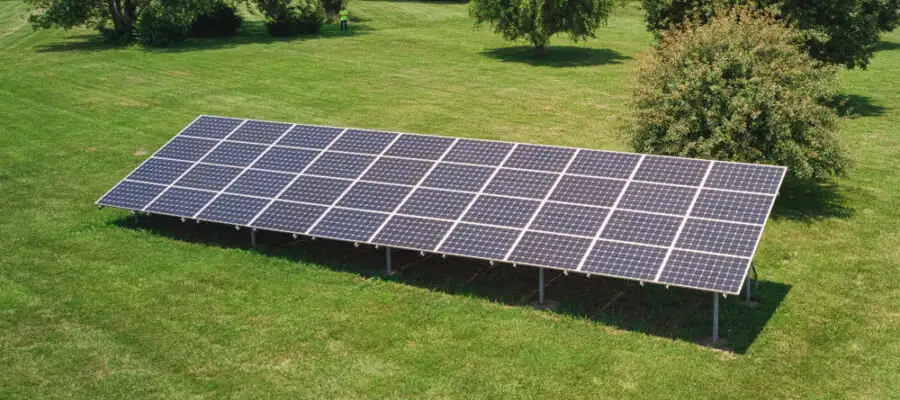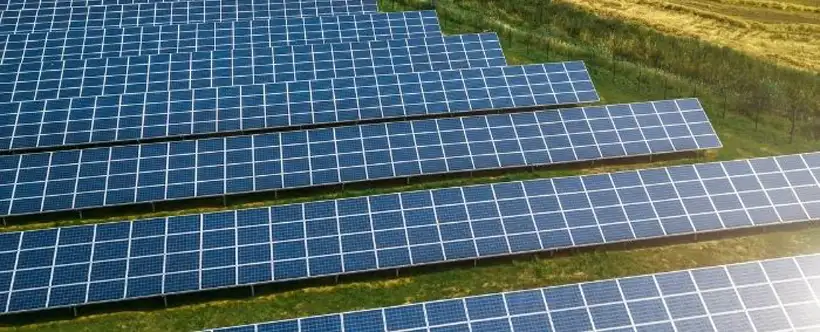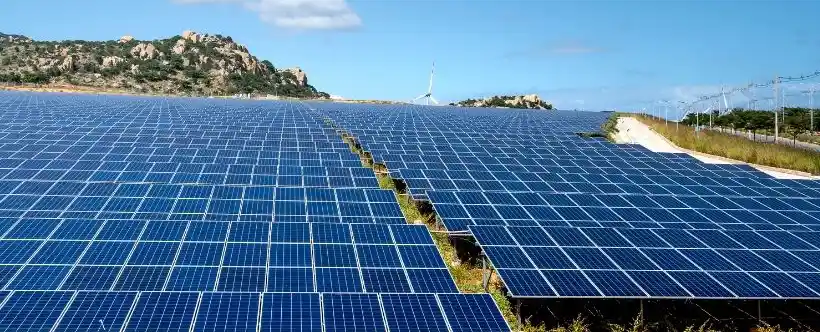- HOME
- ABOUT US
- SOLUTIONS
- Metal Roof PV Mounts and Systems
- Flat Roof Solar Panel Mounting Systems Solutions
- Tile Roof Solar Mounting Systems Solutions
- Solar Tracking Solutions for Commercial PV Projects
- Ground Solar Mounting Systems Solutions
- Floating Solar Solutions - PV Systems
- PV Solar Carport Mounting Systems Solutions
- Balcony Solar Panel Mounting Systems Solutions
- PRODUCTS
- PROJECTS
- COMPANY NEWS
- BLOG
- Contact Us

You have several options when it comes to installing a solar system at your home or business. You must first decide where you will install your solar panels. Most property owners believe that installing solar panels on their roof is the best option. However, if it isn't, other options, such as ground-mounted solar panels, exist. If you don't have a perfect roof but do have a large, open space with plenty of sunlight, you might be a good candidate for these panels.
Ground-mounted panels, like anything else, have advantages and disadvantages. Continue reading to find out what they are.
What Are Ground-Mounted Solar Panels?
Ground-mounted solar panels, as the name implies, are a free-standing solar array mounted on the ground, either atop one pole or on a sturdy metal frame. Because they are installed on the ground rather than on your roof, these solar panels are commonly referred to as ground-mount.
Similar to rooftop solar panels, ground-mounted solar systems use photovoltaic technology to convert sunlight into electricity. Ground-mounted solar panels, on the other hand, are installed on the ground at a 30-degree angle to maximize light absorption and thus output.
How Ground Mounted Solar Panels Work
Ground-mounted solar photovoltaic systems use the same types of solar panels as rooftop systems, but they are installed in a different way:
● The racking system in a rooftop solar installation is designed for an existing structure. When using ground-mounted solar panels, however, the support must also be built. This structure's height can range from a few inches above the ground to several feet.
● The electrical connections and protection devices in both types of PV systems are the same. The main difference is that ground-mounted systems require more wiring because they must be located far enough away from your house to avoid any shadows cast by it.
● Similar to rooftop installations, 60-cell solar panels are commonly used in homes, while 72-cell panels are typically used in solar farms.
Roof-mount and ground-mount solar panels will produce the same amount of electricity if the same sunlight conditions and total wattage are used. A ground solar panel installation, on the other hand, can be designed with an orientation and tilt angle that maximizes the sunlight captured, making the system productive.
The tilt and orientation of a rooftop solar array, on the other hand, are limited by the slope of your roof. A tracking mechanism, which keeps the PV panels angled toward the sun all day, can also increase the energy production of a ground-mounted solar panel system.
You can increase your electricity output and save money on your electric bill without adding more panels. Because tracking devices are not designed for conventional roof structures, solar tracking is not an option for most rooftop installations.
Advantages of Ground Mounted Solar

The following are some critical advantages of ground-mounted panels:
Increased Energy Production
Ground-mounted solar panels outperform rooftop PV cells in terms of power per square foot. Ground-mounted systems deliver power at around a 22% efficiency ratio to rooftop solar panels, which deliver power at around 18-19% efficiency. Furthermore, because of the availability of space, ground-mounted panels are easier to automate and expand their energy production capacity.
When there is less resistance among the panel components, the efficiency of the solar energy system increases. The heat island effect and concentrated heating from rooftops and adjacent buildings reduce the efficiency of rooftop solar panels. Ground-mounted panels, on the other hand, are closer to the ground. The sufficient air passage beneath the panels allows for consistent cooling throughout the day, preventing resistance phenomena and losses.
Easier to Perform Maintenance
One disadvantage of installing solar panels on your roof is their accessibility. A roof is one of the least accessible areas of the house; while installing roof-based solar panels may be convenient, maintaining them will be difficult. By leaving the panels on the ground, the owner can easily clean them after a snowstorm or during the fall. Ground-mounted systems require far less effort to replace old or faulty solar panels than roof-mounted systems, making it easier to spot problems before they impact your energy production.
Furthermore, ground-mounted solar panels are much easier to inspect for electricians or inspectors. This reduces the overall cost of keeping the solar panel system in good working order.
Easy to Install
Ground-mounted panel installation is a straightforward procedure that involves digging holes in the ground and cementing the panels into them. It's more complicated than putting them on your roof, but it means you don't have to give up any roof space to get solar power.
Additionally, compared to rooftop solar panels, ground-mounted solar panels can be more discrete. This means they can be installed on a surface such as a porch where there isn't much space above the roofline. Because of their small stature, they can be installed closer to a house than in conventional rooftop installations.
Reduces Risk to Your Home
Installing rooftop solar panels exposes your home to lightning risk and increases the likelihood of an electrical fire. This occurs as a result of lightning directing a large amount of high voltage to your home. Furthermore, rooftop solar panels increase the risk of damage or fire due to faulty grounding.
However, with ground-mounted solar panels, your home is much less likely to experience electrical hazards. This is typically due to the fact that ground-mounted solar panels are placed closer to the ground. As a result, they are less likely to experience grounding issues, which typically occur as solar panels age.
Disadvantages of Ground Mounted Solar

Now for the disadvantages of ground-mount solar that you should be aware of.
Needed Space
Most homes lack the necessary space for a ground-mount system. In addition to the system's footprint, you also need a space that is sufficiently clear to prevent the system from being shaded. The solar panels may be more susceptible to tree shade because they are closer to the ground. A 10-foot tall tree next to a two-story home, for example, has no effect on the roof, but the same tree on the south side of a ground mount system would.
Additional Permits Could Be Required
Before beginning to construct a ground mount, you might need to obtain permission to erect a new structure on your property, depending on where you live and the zoning laws in your area. Depending on your specific circumstances, this could take a few days or a few months!
The Upfront Cost May Be Higher
While panels installed on the roof are installed directly to the rafters already on your roof, a ground mount will necessitate the construction of a new structure to meet your needs. As a result, when compared to a roof solar system, there is some additional upfront cost.
Environmental Impact
In some cases, there are some concerns about ground-mounted solar and its environmental impact. Large systems may necessitate the removal of vegetation and overhanging trees, as well as crop removal in order to install solar. Pole-mounted systems can reach sufficiently high altitudes to avoid interfering with crops or animals.
Conclusion
If you have plenty of open space, a slightly higher budget, and a way to keep the vegetation around your solar system in good condition, a ground-mount system may be the best option for you. Higher upfront costs are frequently offset by higher lifetime savings because the efficiency outweighs the cost. Of course, each project is distinct. We'd be delighted to collaborate with you on various scenarios to compare. We frequently design stand-alone ground-mounted solar systems, but we also frequently present roof-mounted and ground-mounted hybrid systems.

